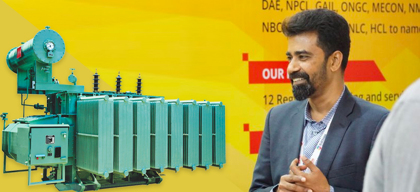Insuring building, plant and machinery to secure your business

Insurance
315 week ago — 9 min read
Summary: Insuring buildings, plants and machinery is prudent for entrepreneurs involved in production. Seeking out the right advice and being cognizant of terms and conditions ensures you get the right policy for your business.
“I had a claim of INR 1 million when my factory got burnt, the insurance company paid me only INR 100,000."
“The insurance agent comes to us for renewal premium, telling us that everything is covered, but when there is a claim, we are told that, some of the damaged item(s) are not covered and that the claim will be paid at a reduced level."
“I wish I had asked the insurance company the details regarding the Policy Terms and Conditions and how the claim will be dealt with.”
“I gave the renewal business to the the service provider that was the cheapest of all options because he charged me the lowest premium. He told me that I need to cover stocks insurance only to the extent of bank’s hypothecation. But now the surveyor tells me that the total value for insurance should have been INR 5 million instead of INR 1 million. Now the claim that I will get will be for only INR 200,000. I wish I had listened to the other company’s agent who told me that I should insure the stocks for the full value instead of insuring for INR 1 million.
Do these words sound familiar? Did your business get impacted when there was unfortunate incident of a loss in your factory? Did you think you had the appropriate insurance policy with the right cover but realised later, to your cost, that you were not?
As you are aware, every enterprise is subject to various kinds of risks. For the purpose of this discussion, these risks are classified into broadly two types: (a) Trading Risks; and (b) Pure Risks.
Trading Risks are those risks that any business person faces when s/he carries on any trade / manufacturing activity. In this activity, the business person either makes a profit or a loss.
Pure Risk on the other hand refers to a situation where there is only ONE outcome in the event of a happening: financial loss. This is the only outcome out of an accident and this is the type of risks that are insurable and are generally insured. This is also referred to as speculative risk
Insurance industry, worldwide, operates on certain fundamental principles. As you may be aware, insurance is a form of risk mitigation wherein the insured i.e. the buyer of insurance policy transfers the financial risk to the insurer (seller of the insurance policy). Through the principle of pooling, insurers collect premium from many insured parties and when an unfortunate event happens, the loss of few are shared by many i.e. through the premiums that are paid by the insured for mitigating the risk. However, for insurers to ensure that everyone in the pool is given a fair treatment, insurers put certain warranties, terms and conditions in the policies that the insureds need to observe.
There are two important factors that you should know, ask about and remember while insuring your fixed assets such as building, plant and machinery and stock:
-
Basis of sum insured (total value of assets your seeking protection from)
-
Under insurance (total value you will be paid, if you’re to suffer the unforeseen loss)
We will see each of them in a more detailed manner here and its significance in respect of “Sum Insured”:
-
Basis of Sum Insured: When insuring Building, Plant and Machinery, there are two kind of values that are available for consideration, as under.
- Market Value: This is the current day replacement value of an asset less the deprecation for the usage of an asset. For instance, if an asset was bought 5 years back for INR 700,000 and its current day replacement value is INR 1 million. Let us assume that the over 5 years, the total depreciation amounts to Rs. 300,000/-. Then the market value is INR 1 million less INR 300,000/- i.e. INR 700,000/-. When a policy for a fixed asset is taken, the sum insured in the policies by default represent the Market Values of the assets proposed to be insured.
- Reinstatement Value: This value represents the current day replacement value of an asset without depreciation. Taking the above example, the Reinstatement value will be INR 1 million.
- Market Value: This is the current day replacement value of an asset less the deprecation for the usage of an asset. For instance, if an asset was bought 5 years back for INR 700,000 and its current day replacement value is INR 1 million. Let us assume that the over 5 years, the total depreciation amounts to Rs. 300,000/-. Then the market value is INR 1 million less INR 300,000/- i.e. INR 700,000/-. When a policy for a fixed asset is taken, the sum insured in the policies by default represent the Market Values of the assets proposed to be insured.
-
Significance for Sum Insured: The sum insured forms the basis for payment of claims when a claim arises.
-
Typically, in the event of a claim, very rarely does a total loss occur. In almost all the cases, a partial loss occurs. The surveyor, appointed by the insurer will check the following (this list is a non-exhaustive list):
-
Cause of loss
-
Ascertain and confirm whether the property damaged was insured or not
-
Whether the policy was in force
-
Whether the damage occurred due an insured peril
-
Whether the sum insured was adequate or not.
If the sum insured was adequate, then the surveyor will recommend claim settlement in full subject to any excess and depreciation. However, if the sum insured is not adequate then the surveyor will state that there is an underinsurance and that the claim payable gets reduced in proportion to the quantum of underinsurance.
-
The Under Insurance clause: The Fire Insurance Policy of SBI General Insurance states that “Basis for Indemnity - As the Policy can be availed of either on Market Value or on Reinstatement Value of the property being insured, the basis of indemnity also differs accordingly. In either case, if the Sum Insured is less than the amount required to be insured, the Company will pay only in such proportion as the Sum Insured bears to the amount required to be insured. Every item (if more than one) shall be subject to this condition separately.”
-
This under insurance clause is applicable almost universally across all the property insurance across the world.
Condition of Average (Underinsurance): The Sum Insured by each item of this Section (other than those applying solely to fees, rent, removal of debris or private dwelling houses) is declared to be separately subject to Average.
Whenever a Sum Insured is declared to be subject to Average, if such sum shall at the commencement of any DAMAGE be less than the value of the property covered within such Sum Insured, the amount payable by the Insurers in respect of such DAMAGE shall be proportionately reduced.
-
Under Insurance occurs because, over a period of time,
-
Some amount of complacency sets into the way we deal with insurance of assets and we insure the fixed assets based on the existing insurance terms.
-
We do not revisit the terms and conditions or the sum insured of the policies; in a nutshell, we do not revisit the portfolio. This is true especially if the size of the enterprise is not large.
-
Lack of knowledge on the small but important things that could impact your financial protection that you seek from Insurance.
-
The general attitude to reduce cost of premium believing that total loss is remote also induces the policyholder to take a lower value of sum insured causing under insurance.
Conclusion
As seen, insuring one’s fixed assets is important; but what is equally or more important, is to understand the terms, conditions of the insurance policy and to regularly check whether the sum insured is adequate or not and whether the sum insured represents the changes that might have happened to the enterprise over a period of time. This write up may not have provided all the answers that you have sought, but should it provoke questions in relation to insurance of fixed assets, then the purpose of the article would be served greatly.
To explore business opportunities, link with me by clicking on the 'Invite' button on my eBiz Card.
Disclaimer: The views and opinions expressed in this article are those of the author and do not necessarily reflect the views, official policy or position of GlobalLinker.
Posted by
Natarajan RamanathanAm a Principal Officer and have proven capabilities in providing Non Life Insurance Solutions covering broadly all kinds of Insurance for Corporates. Operate primarily in Fire...
View Natarajan 's profile
SME Inspirations
Other articles written by Natarajan Ramanathan
What lies ahead for the Insurance sector
185 week ago
Insurance after Covid-19 lockdown
219 week ago
Uberrimae Fides and the moment of truth
268 week ago
Most read this week


















Comments
Please login or Register to join the discussion